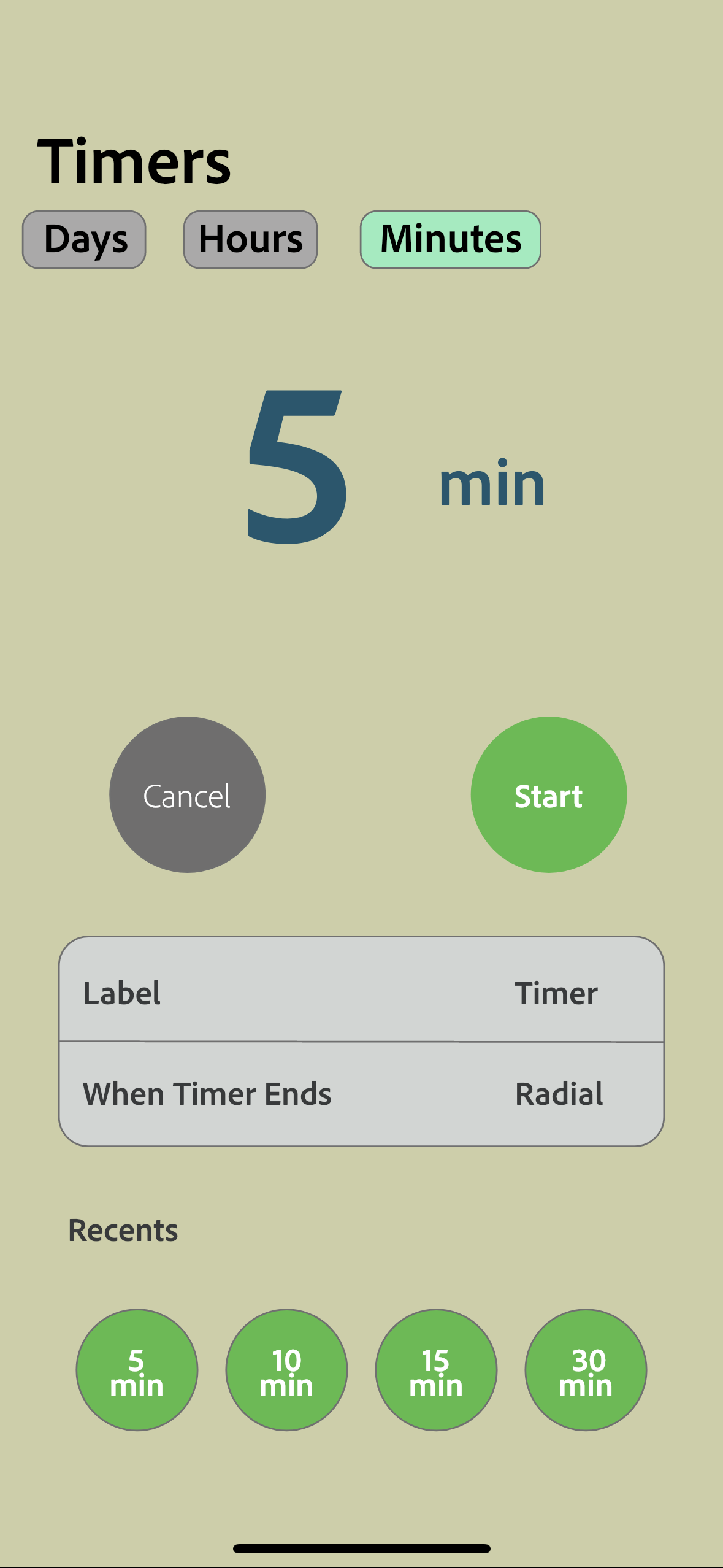Perfect Timing: Designing Visual Time Cues for Children’s Emotional Transitions
SKILL:
UX/UI research
Visual design for children’s apps
Prototyping and interaction design
Competitive analysis
Inclusive and accessible design
Behavioral insight synthesis
STEEP analysis
Adobe Creative Suite (XD, Illustrator, Photoshop)
Role: UX/UI Researcher
Duration: 4 Months
How might we design an engaging onboarding program for Big Thought’s site-specific and HQ staff that sets them up for success?
Project Overview
Many children, especially those who have not yet learned to read a clock, struggle with understanding the concept of time. This lack of comprehension can lead to anxiety and difficulty transitioning between activities. The Perfect Timing project aims to create a visual and interactive solution to help children anticipate transitions and develop a structured sense of time.
What’s the Problem?
Children under 12 often lack a clear perception of time, making it challenging for them to transition smoothly between activities. Without a visual representation of time, they may feel frustrated, anxious, or resistant to changes in routine.
Key Challenges Identified:
Difficulty understanding time progression – Young children struggle with abstract time concepts.
Emotional distress during transitions – Lack of awareness about upcoming changes can cause anxiety.
Need for simple and engaging visuals – Overly complex graphics can be overwhelming for young users.
Parental need for structured transition tools – Parents require a way to help children adapt to schedules.
Research Methods
The research focused on understanding user behavior and identifying opportunities for a visual time-management tool.
Target Audience:
Parents with children under 12.
Children who struggle with time perception and activity transitions.
User Needs & Insights:
Visual representation is crucial for children's understanding.
Simple, engaging illustrations work better than detailed or overwhelming graphics.
Customizable features allow adaptability for different learning styles.
Competitive Analysis:
Mouse Timer – A child-friendly timer with animated elements.
Time Timer – Designed for children with ADHD, providing visual time tracking.
Differentiation: Perfect Timing focuses on flexibility, simplicity, and inclusivity to support various learning styles.
Solution
The Perfect Timing App is a child-friendly digital tool that visually represents the passage of time, helping children smoothly transition between activities.
Key Features:
Welcome Page: User-friendly setup for parents and children.
User Profiles: Allows parents to manage multiple children and timers.
Parental View: Provides pause and end controls for flexibility.
Children’s View: No pause or end function, ensuring children stay on schedule.
Visual Countdown: A clear, simple timer displaying time progression.
Customization: Adjustable colors and animations to match children's preferences.
Transition Preparation: Notifications near activity end time to reduce stress.
Educational Framework: Helps children understand structured time progression (beginning, process, and conclusion).
Visual System:
Color Scheme: Engaging yet non-overstimulating colors.
Typography: Clear font hierarchy for easy readability.
Why This Work Mattered
Perfect Timing fills a key gap for children under 12 who struggle with time perception. Visual cues help ease transitions, reduce anxiety, and support emotional regulation. For caregivers, it offers a practical tool that simplifies routines beyond verbal prompts.
Despite time and resource constraints, the project shows strong potential for broader impact and scalability across home, school, and therapeutic settings.
The Perfect Timing app is designed to enhance children's time awareness, reduce anxiety, and improve daily transitions for both kids and parents.
Success Metrics:
Reduction in emotional distress when transitioning between activities.
Positive feedback from parents on their child’s improved time management.
Increased engagement with the app as a daily time-management tool.
Trust & Credibility:
Developed with a strong educational foundation to teach time awareness.
Helps children develop practical skills for smoother daily routines.
Future Potential and STEEP Applications
1. Future Outlets & Applications
Educational Settings: Integration into classroom routines as a tool for helping children transition between activities such as recess, snack time, or centers.
Therapeutic Contexts: Adoption by occupational therapists or child psychologists for children with ADHD, autism, or sensory processing disorders.
Smart Home Devices: Development into a companion feature for voice assistants like Alexa or Google Nest to promote structured routines at home.
2. Cross-Disciplinary Application
The research and design methods used here could extend to areas such as:
Pediatric healthcare: Visual cues for wait times or procedure preparation.
Libraries & Museums: Helping children anticipate time in child-friendly public spaces.
Transportation hubs: Tools for preparing young travelers for wait times or transitions during travel.
3. STEEP Considerations
Social: As families become more diverse in structure and cultural background, tools like Perfect Timing offer inclusive solutions adaptable to various parenting styles and household needs.
Technological: Growth in digital learning and parenting apps creates a favorable environment for integrating this tool into platforms parents already use.
Economic: Affordable or freemium versions could reach lower-income families, addressing equity in access to behavioral support tools.
Environmental: A digital app reduces the need for paper-based scheduling charts or printed routine visuals.
Political: Could support early childhood initiatives and digital inclusion strategies within educational policies or public health programming.
Conclusion
Perfect Timing helps children visually grasp the passage of time, reducing anxiety and promoting a structured sense of routine. By providing clear, customizable visual cues, the app empowers both children and parents to manage transitions with confidence and ease.




















